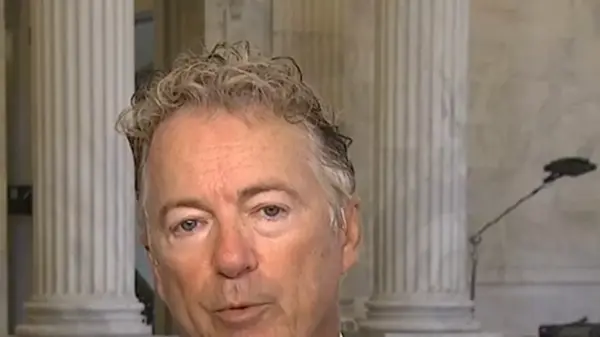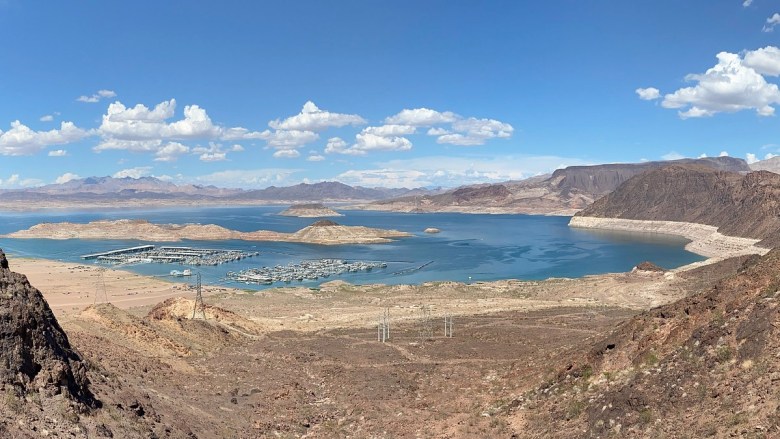Water levels in the Colorado River basin are reaching concerning lows following one of the driest years recorded, prompting renewed urgency in negotiations among the seven states that depend on this vital resource. According to the U.S. Bureau of Reclamation, both Lake Mead and Lake Powell, the largest reservoirs in the United States, are projected to decline alarmingly in the coming years. Federal officials are calling on Arizona and Nevada to further reduce their water allocations from the overextended river, while California, which holds senior rights to the water, is not expected to face immediate cuts.
Negotiations have become increasingly tense as the current guidelines for managing the river are set to expire in 2026. “The urgency for the seven Colorado River Basin states to reach a consensus agreement has never been clearer. We cannot afford to delay,” stated Scott Cameron, Acting Assistant Secretary for Water and Science at the U.S. Department of the Interior. The dynamics between the lower-basin states, which include California, Arizona, and Nevada, and the upper-basin states—Colorado, Wyoming, Utah, and New Mexico—are fraught with disagreement over dwindling water supplies.
J.B. Hamby, California’s chief negotiator and chairman of the Colorado River Board, emphasized the necessity for collective responsibility: “The future of the Colorado River cannot rest on our shoulders alone. We have to ensure that every part of the basin takes responsibility for protecting the river’s future.” In response, Becky Mitchell, Colorado’s commissioner to the Upper Colorado River Commission, expressed hope that cooperation from the lower basin could lead to a consensus.
The federal government has set a deadline of November 11 for the states to reach an agreement on water management. If the seven states fail to come to terms, Secretary of the Interior Doug Burgum has indicated that the government may impose its own regulations, a scenario Cameron hopes to avoid.
California’s reliance on the Colorado River is significant, as it receives the largest share of its water supply to irrigate approximately half a million acres of crops and to support urban areas in Southern California. Moreover, over half of the power generated at Lake Mead’s Hoover Dam is allocated to California. As discussions progress, California water suppliers are also engaged in parallel negotiations to address potential shortages within the state.
With Lake Mead and Lake Powell currently only 31% full, the situation is dire. Projections indicate that Arizona could face an 18% reduction in its water allotment, Nevada a 7% cut, and Mexico a 5% decrease if conditions do not improve. “Even with all of our efforts to do record amounts of conservation, it’s still not enough,” said Bill Hasencamp, manager of Colorado River resources for the Metropolitan Water District.
Over a century of agreements has governed the allocation of the Colorado River’s water, which supports over 40 million people across seven U.S. states and two in Mexico. The river has faced unprecedented challenges, with climate change exacerbating a long-standing imbalance between water demand and supply. The Biden administration’s call for emergency cuts reflects the critical nature of the situation, where the massive reservoirs have dropped to historic lows.
The projections for the next two years reveal a stark reality. Experts warn that another dry year could see Lake Powell fall below levels necessary for power generation by December 2026. With climate change contributing to increased temperatures and arid conditions, the runoff into Lake Powell has been significantly below average, further complicating the negotiations.
Brad Udall, a senior water and climate research scientist at Colorado State University, characterized the situation as “beyond awful.” Despite this bleak outlook, he remains cautiously optimistic, believing that a last-minute resolution may be possible.
As the negotiations unfold, a new proposal is emerging under the previous administration, aiming to allocate a specific percentage of the river’s average flow to each basin. This plan suggests that the lower basin and Mexico might receive between 55% and 75% of the average flow, pending agreement. Hamby stated, “In our case, it would be an agreement to live with less than we’re otherwise entitled to.”
The future of the Colorado River hinges on these negotiations. Without updated policies, experts warn that the reservoirs could reach a critical state known as “deadpool,” where water cannot be released. This alarming prospect highlights the imperative for a more stringent and cooperative approach to water management in the Colorado River basin.
As stakeholders grapple with these challenges, the need for a sustainable solution has never been more pressing. The urgency for action is clear, and the future of water access in the region may depend on the outcome of these negotiations.






































































